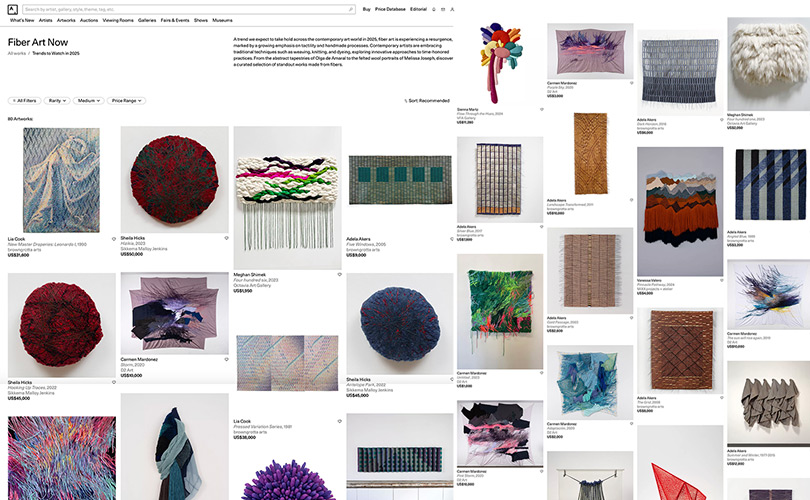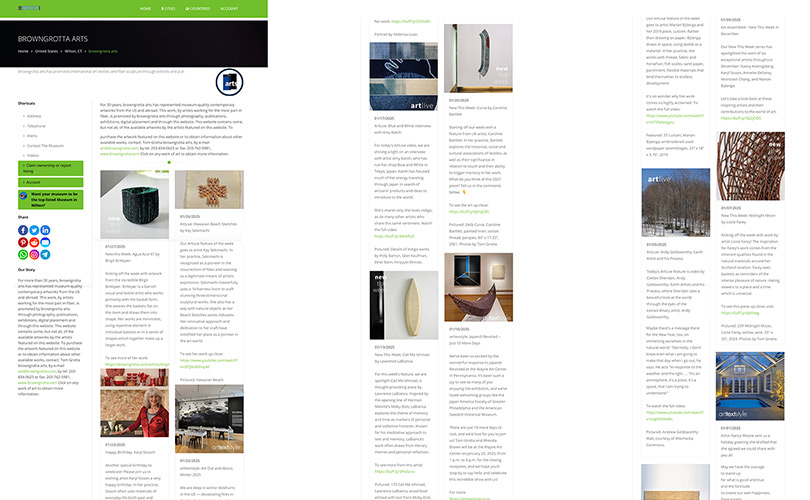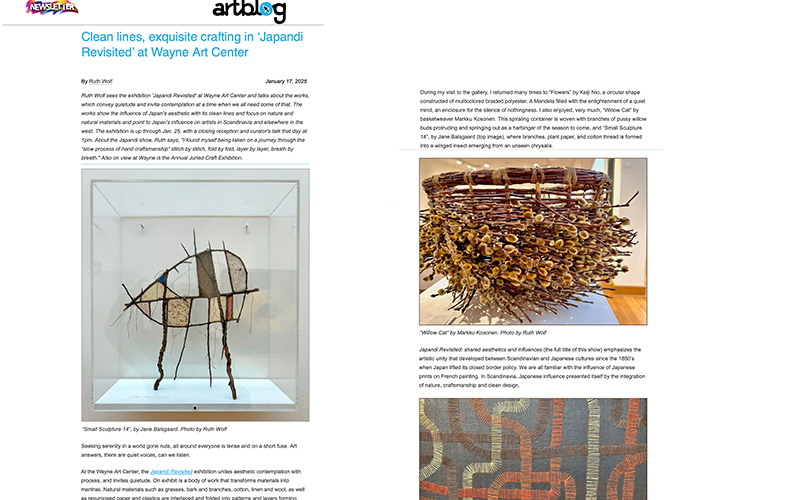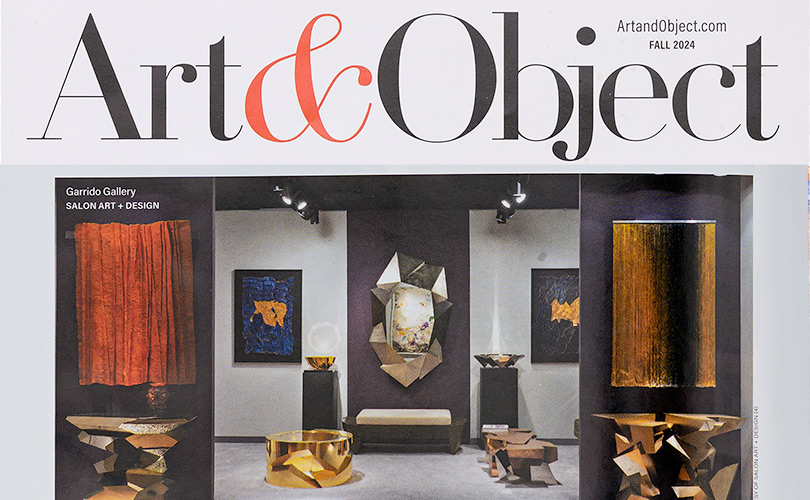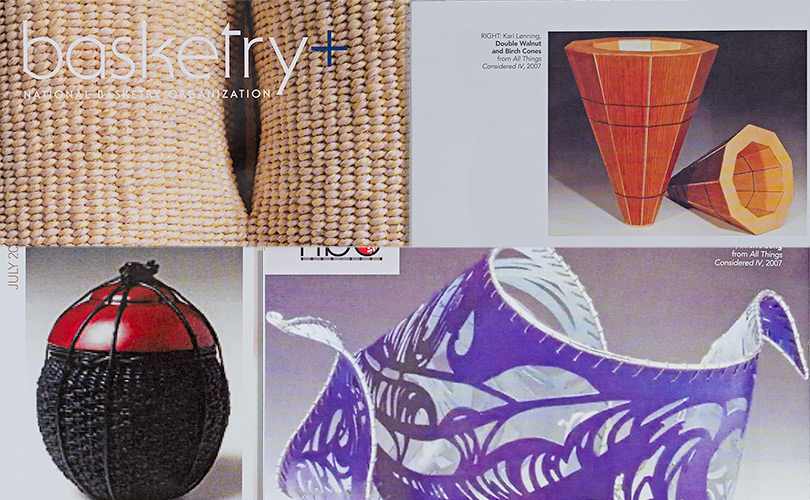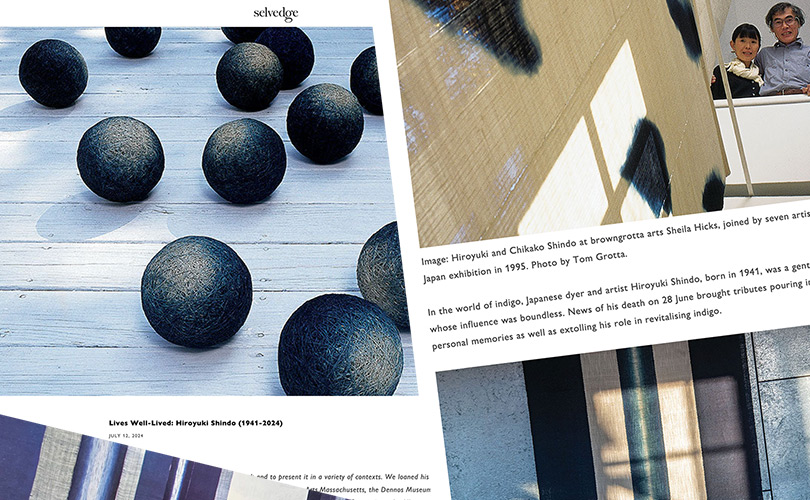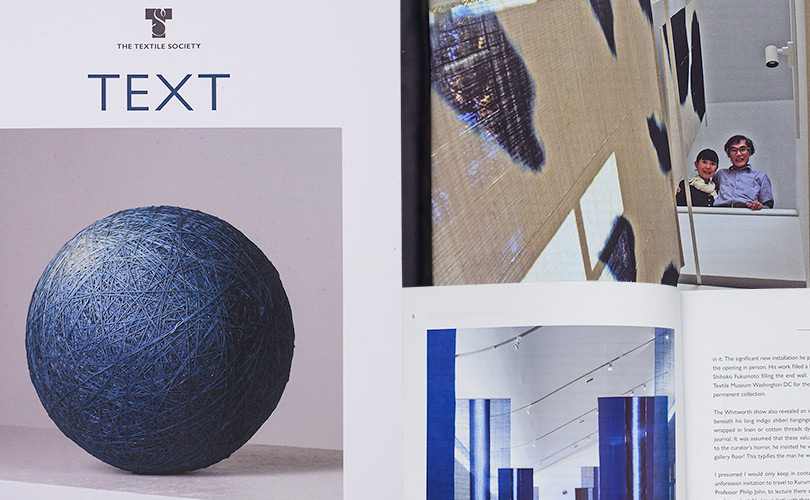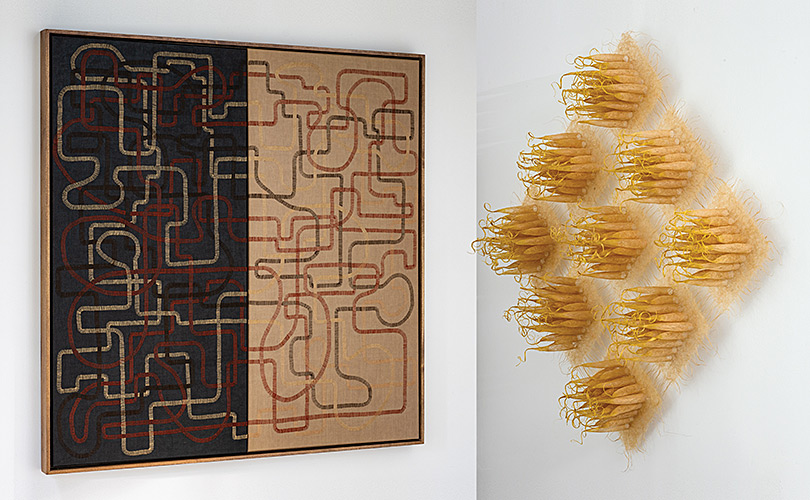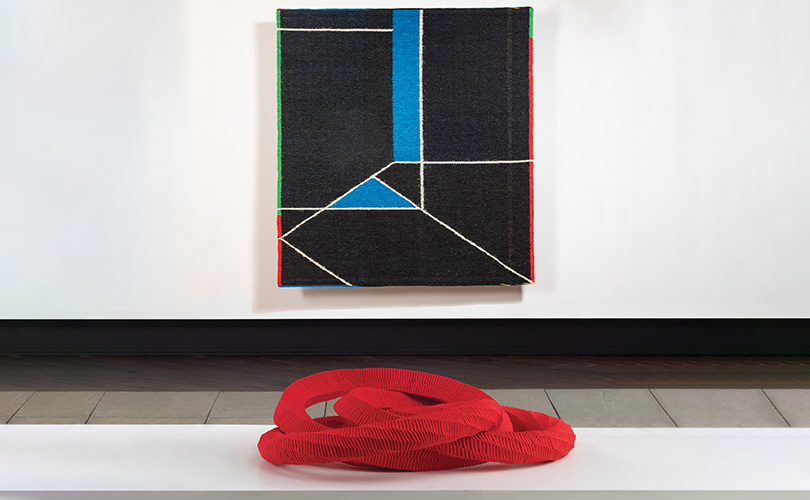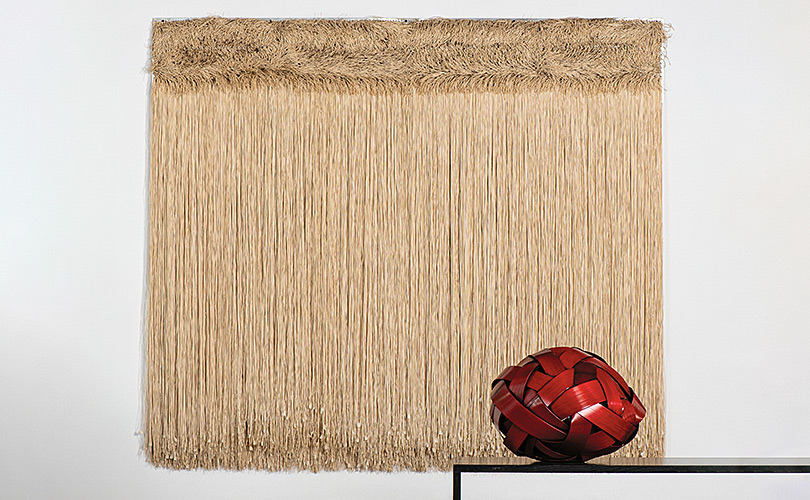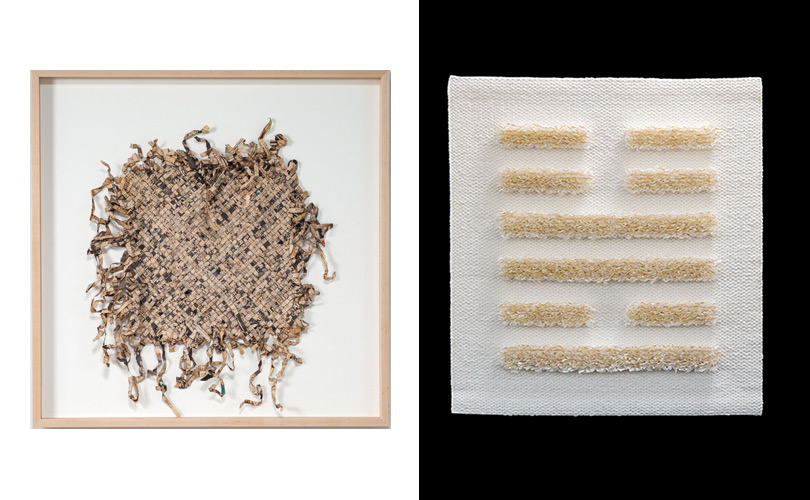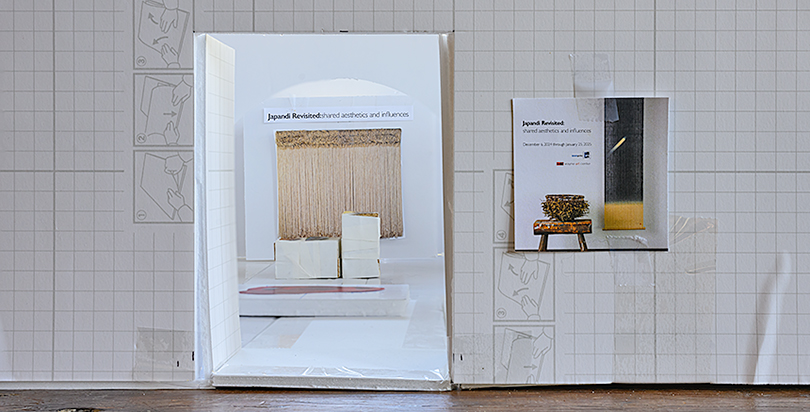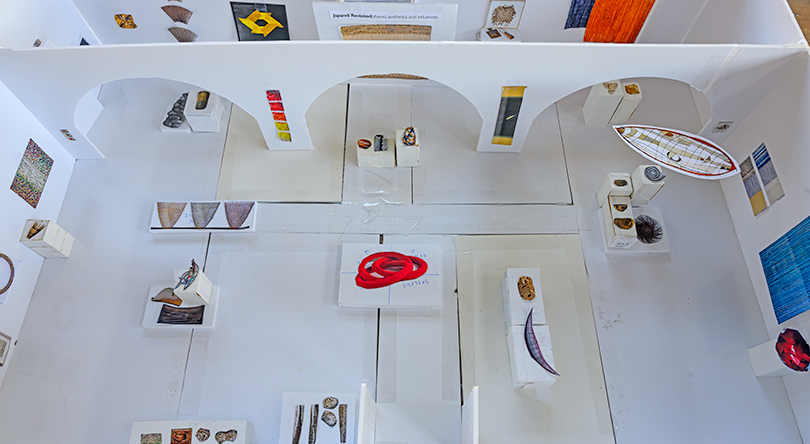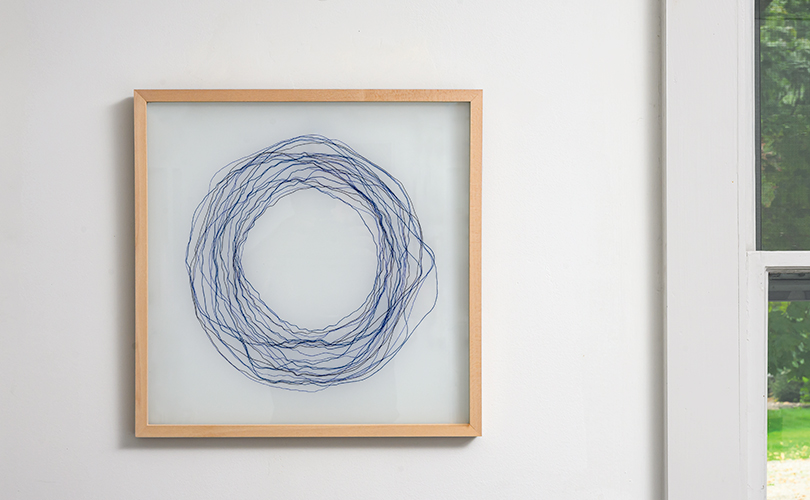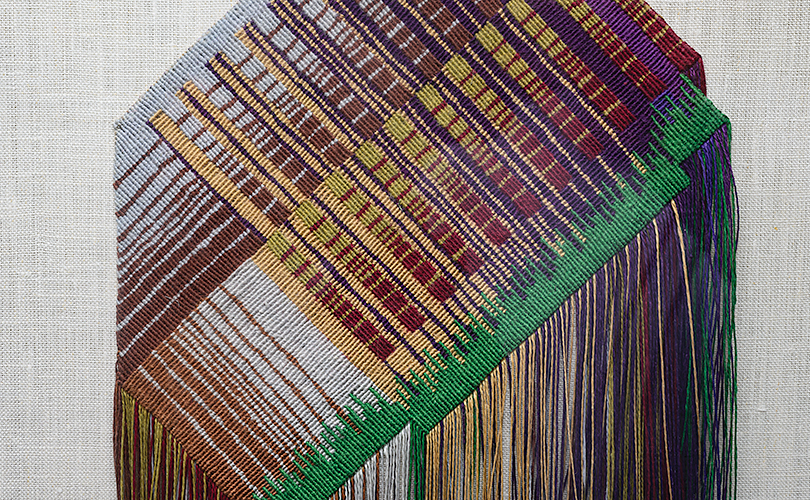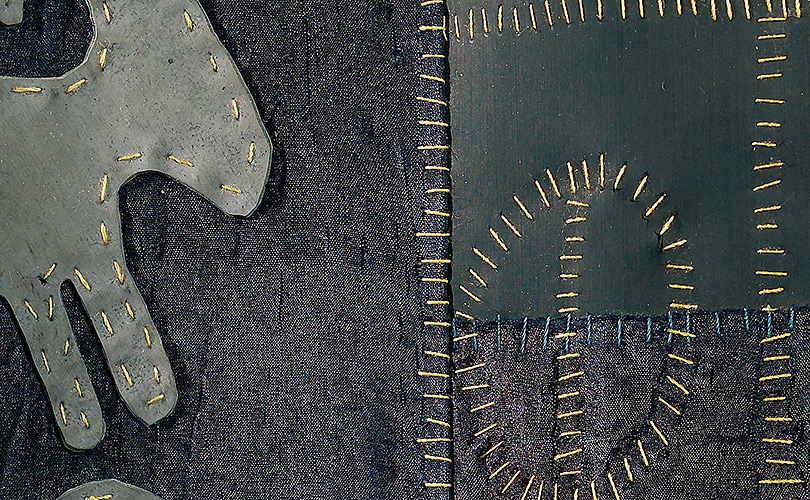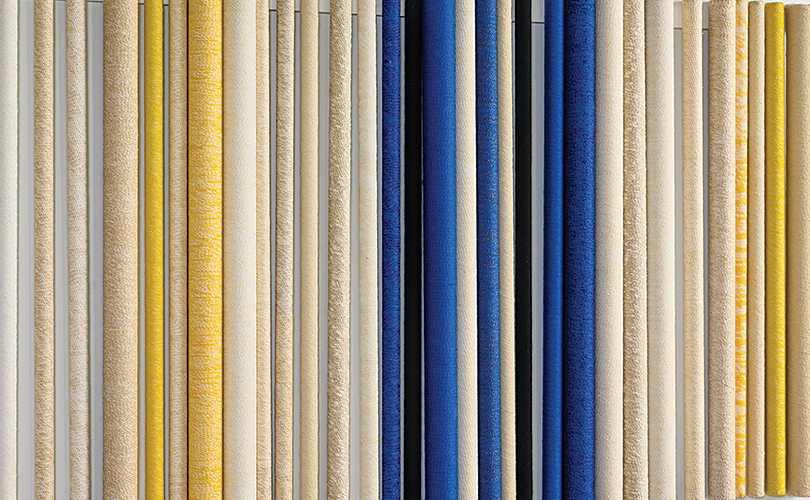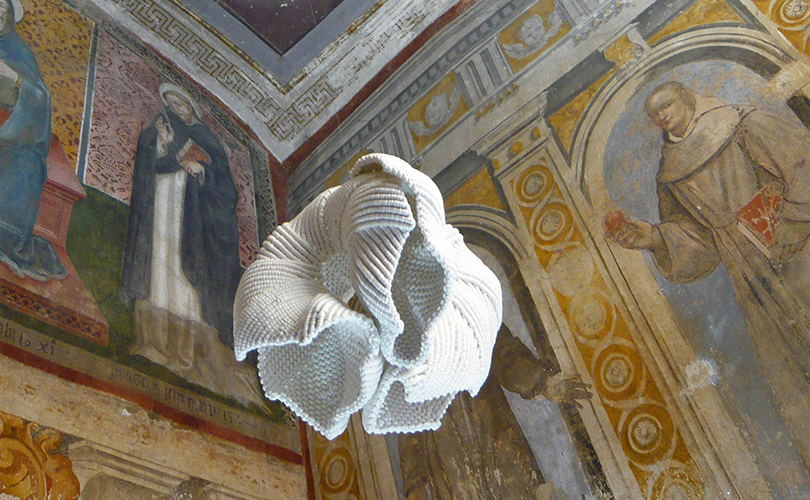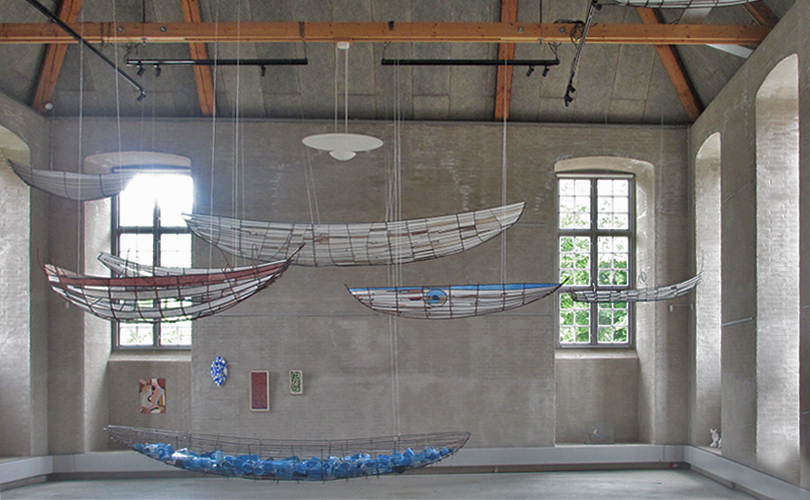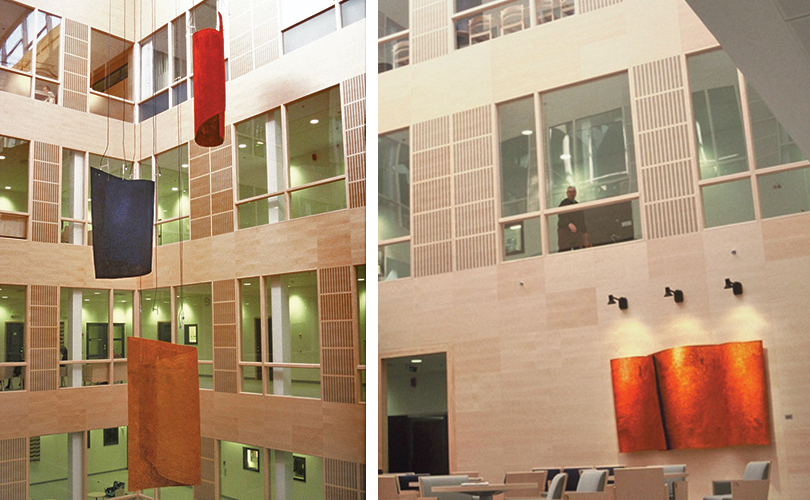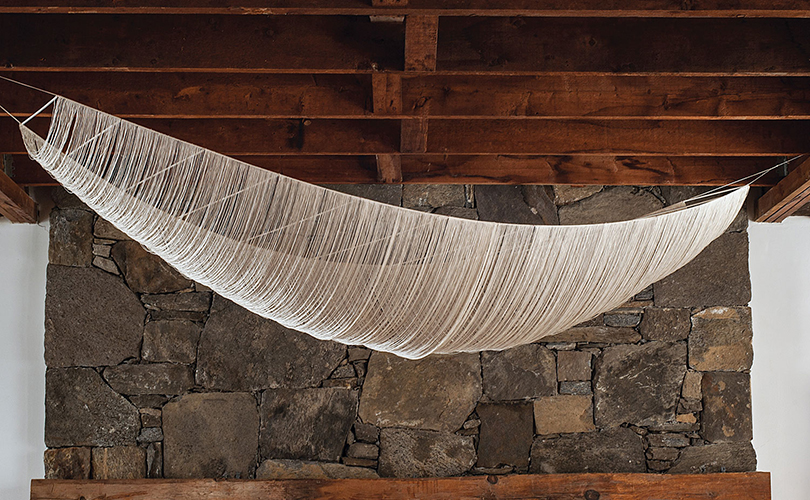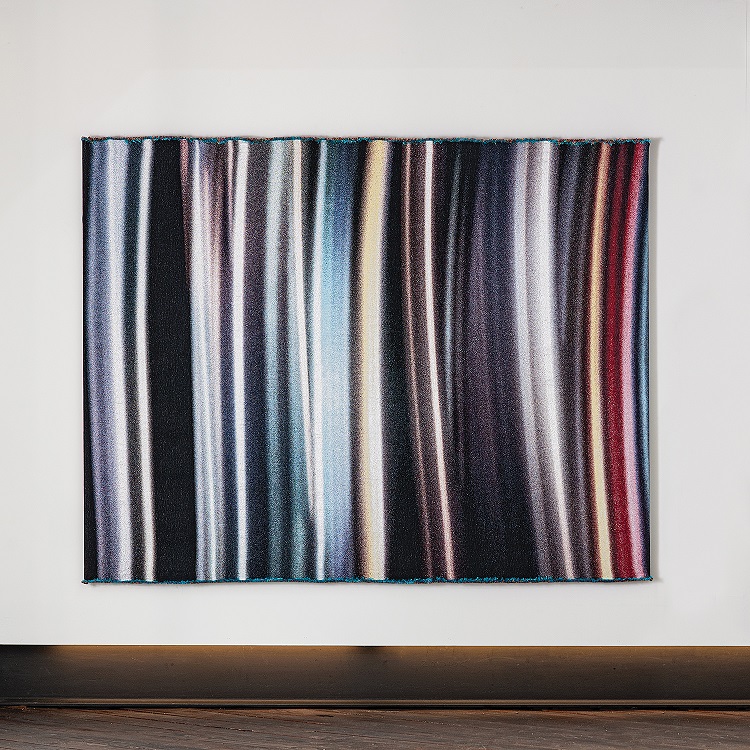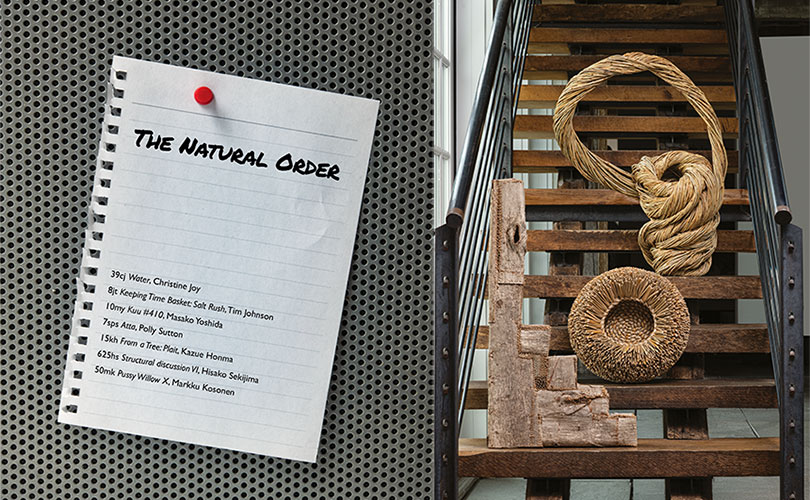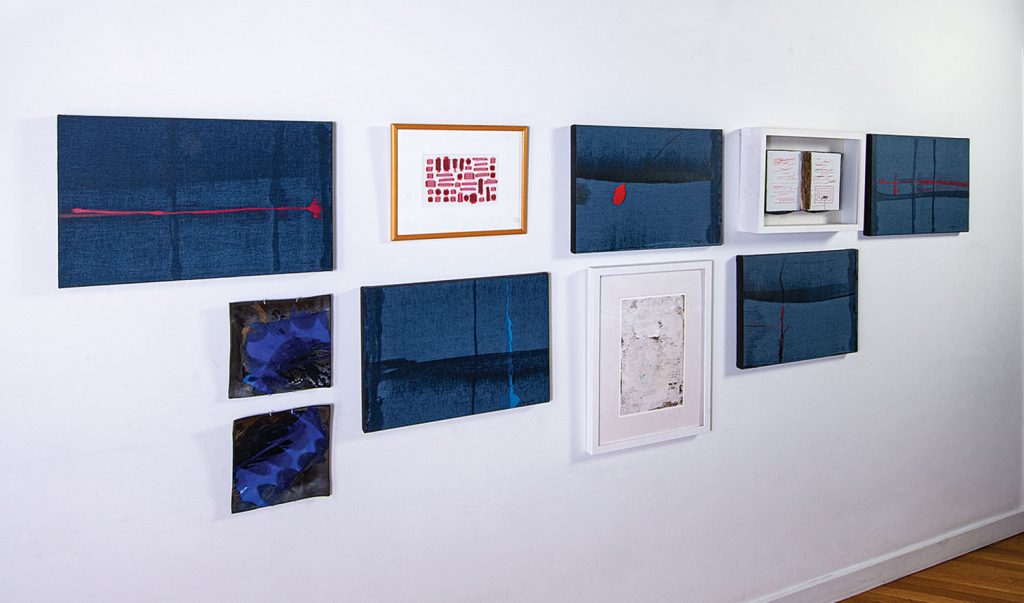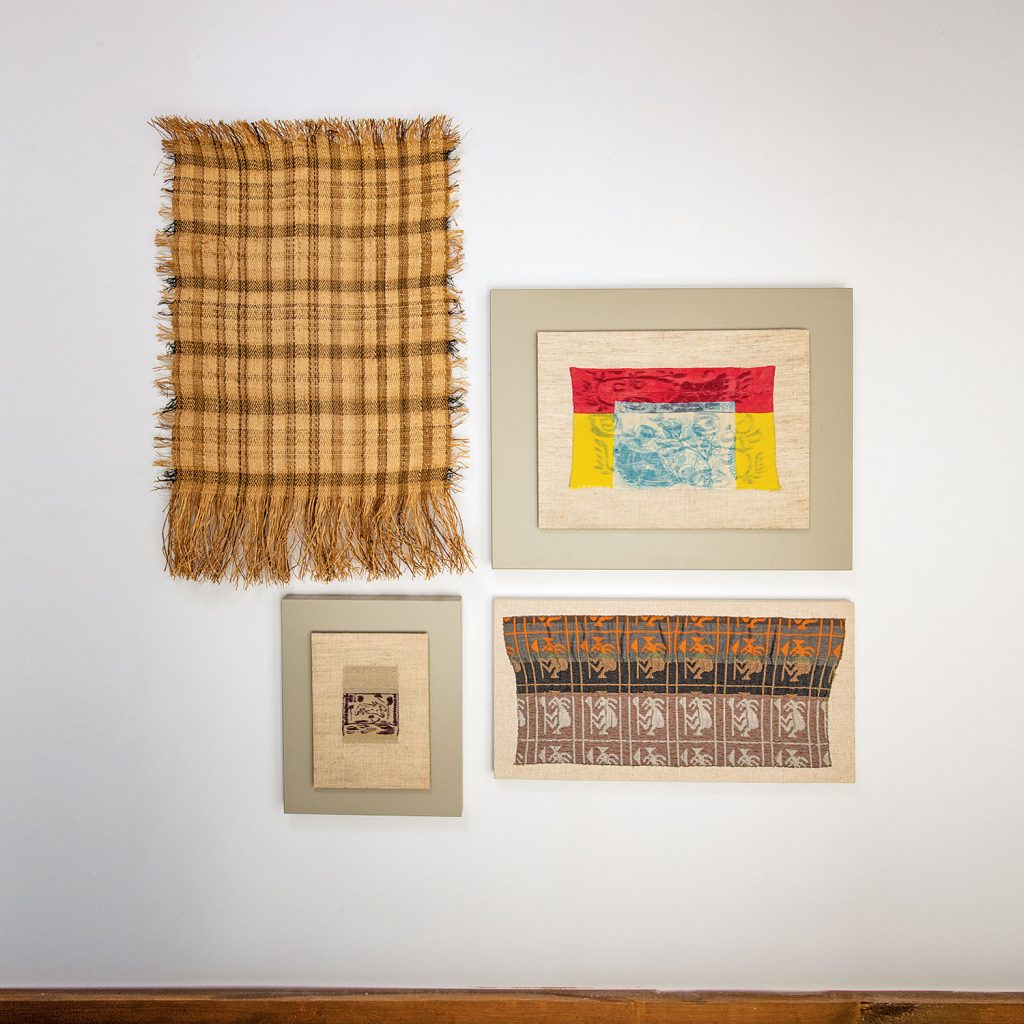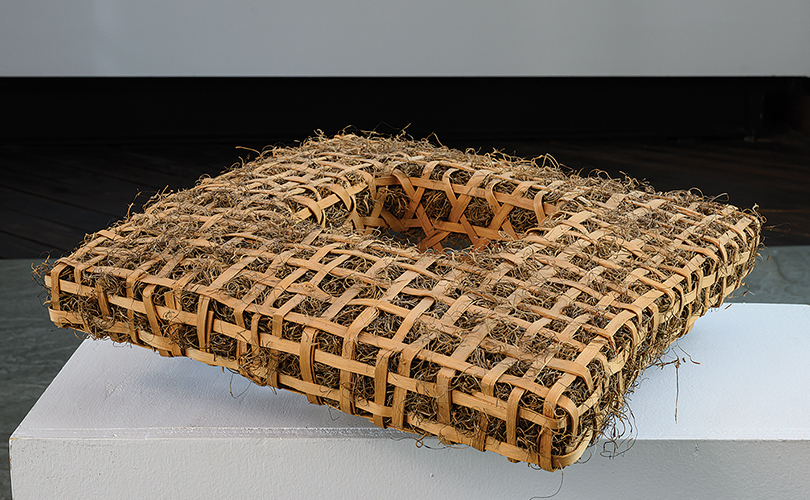
September had five Mondays, so we provided a full complement of artworks for New This Week. First up was John McQueen‘s 1970s basket, Untitled #152, made of black ash and Spanish moss. In his lifetime, McQueen created more than 500 sculptural baskets from willow, bark, moss, cardboard, and recycled plastic — nearly all of materials that he gathered from his yard or his trash. His influence on other artists and participants in his workshops was immeasurable (See rembrances by Hisako Sekijima and Hideko Numata on arttextstyle.)
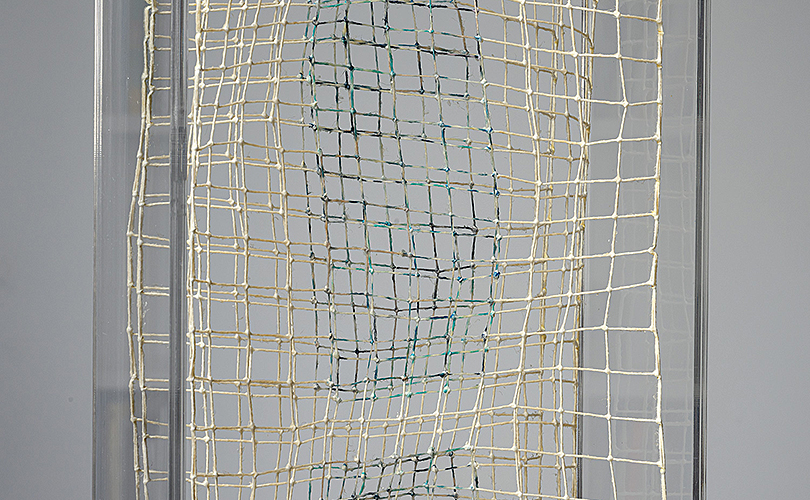
Our next New This Week artwork was Rebecca Medel’s Semiotic. Semiotics is the study of how meaning is created and communicated. Its origins lie in the academic study of how signs and symbols (visual and linguistic) create meaning. It’s a parallel for Medel’s work in which she explores ideas involving time and space metaphysics, and symbolism. During her graduate education, Medel developed a personal off-loom technique to knot large structural multi-planed square grid nets with ikat and braid resist threads. These resist processes separated color and created ambiguous or floating values of color. Medel singled out the use of linen and cotton thread because they are intrinsically structural and can be both bleached and dyed. The elemental characteristic of the work was an exploration of light through the grid structure, without mass and weight, on the edge of being physically supportable, and creating transparent weightlessness. Structure was achieved through the use of lines that became planes, at times parallel and layered, at other times connecting and intersecting perpendiculars; against the wall or coming out in relief.
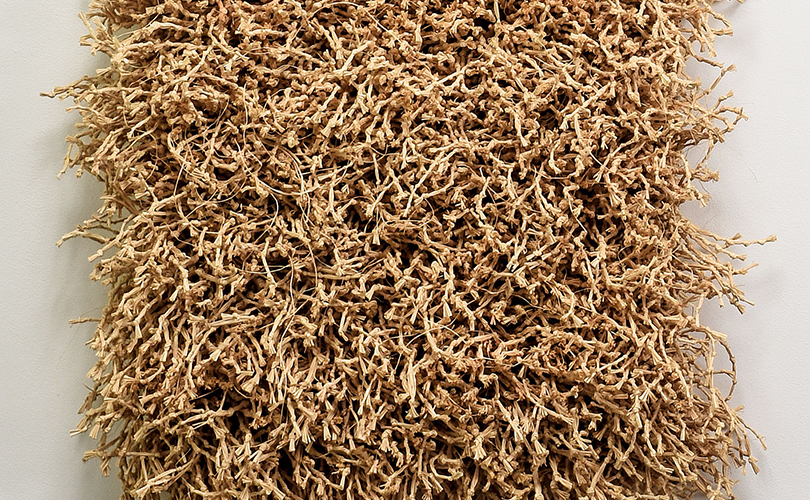
After receiving his BFA in Art Education at Kutztown University, Lewis Knauss completed an MFA at Tyler School of Art. He taught for 30 years at Moore College of Art, in Pennsylvania. Knauss’s art is inspired by landcape — Pennsylvania, Massachusetts, Colorado, New Mexico, Israel, and, Egypt. Another influence in works like Prayer Field, is meditation. “When my mother died,” he has said, “I decided to look into mindfulness-based stress reduction. My art is a form of mediation because you have given yourself a focus. I do a lot of knotting in my work. When a friend was diagnosed with cancer, I didn’t know what to say, so I made a long piece with knots and said each knot is a prayer.”
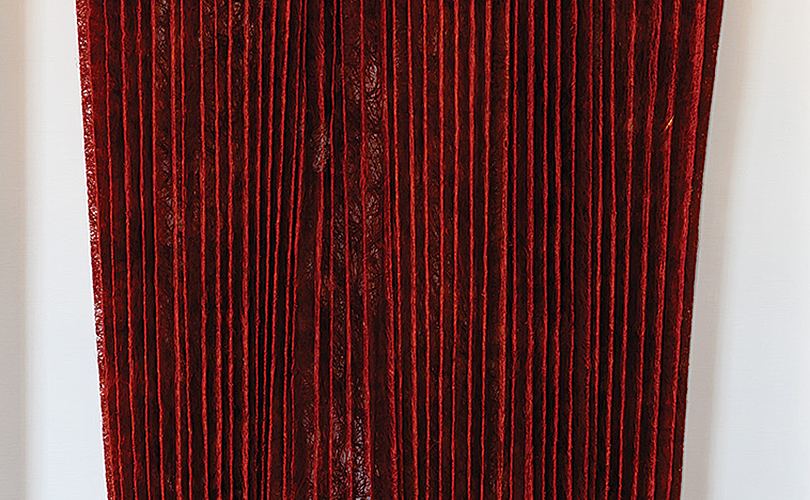
Pleated by Mia Olsson is made of sisal fibers, dyed and formed in a technique unique to the artist. The sisal fibers used by the Swedish artist are shiny and reflect the light, even more when formed in relief. The colors are richly saturated — engaging the viewer on each viewing. Olsson manipulates the prickly sisal into airy, semi-transparent wall sculptures, dyed in richly saturated warm tones. “I am interested in exploring textile fibers, how they are, their properties and characteristics, and what I can do with them,” says Olsson. Olsson describes sisal as “so interesting to work with, especially when forming three-dimensional pieces. My work is experimental and I never know on which journeys the fibers will take me.”

Adela Akers was born in Spain, educated at the University of Havana in Cuba and inspired by her extensive travels, Akers grounded her practice in a diverse and geographically disparate range of influences. Landscape Interrupted, our last New This Week entry for September,reflects her visit to the Democratic Republic of the Congo, where she observed the painting process of the Mbuti women of the Ituri Forest. Akers’ work was also informed by the abstract expressionism movement in the 1950’s. A work by Adela Akers that resulted from Akers’s study of the marks made by Mbuti women will be features in Beauty is Resistance: art as antidote at browngrotta arts this month (October 11 – 19).

